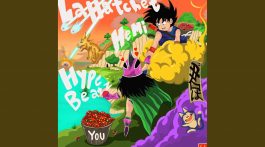It can be argued that there are a few ways college football is better
than the NFL. For one thing, players are fighting not for a paycheck,
but for school spirit and pride, which inspires them to win every game.
The atmosphere surrounding each game is highly charged as boosters,
alumni and fans try to propel their school to victory with their force
of will. But perhaps one of the best elements of college football is
the feeling that any player at any point during a game can be a
difference maker, making big plays and motivating their squad to
greatness. Tiburon and EA Sports tried to capture that feeling as the
primary focus behind this year’s NCAA Football 08, and for the most
part, it does this rather well; but some of the other adjustments are
so small, you almost feel like you’re playing last year’s game all over
again.
It’s Time For Kickoff
Last year, NCAA Football experienced a renaissance of offensive,
defensive and special teams adjustments that really strengthened the
play of the game, such as line shifts, a new kicking meter and
defensive hot routes. While these older features have made the
crossover to this year’s title, there’s fewer changes made on both
sides of the ball. As a result, veterans of NCAA 07 will definitely
note the lack of groundbreaking adjustments that made last year’s title
so great to play. When it comes to the offense, the majority of the
attention has been placed onto the quarterback and play calling. For
instance, this year, the ability to bluff your opponent by showing them
potential play art for a down has been included in multiplayer play.
Players can display the actual play art, or they can show off fake run,
pass or play action assignments in an attempt to throw off their
opponents. It’s an interesting concept, but you’re probably not going
to rely on this as a key tactic to get you through a hard fought
multiplayer match. If anything, you’ll probably rely more on the
ability of your receivers to now use the highlight stick to truck or
evade tackles based on their size more than the play art function in a
multiplayer matchup.
Apart from play calling, avoiding sacks is somewhat easier to do thanks
to the QB Avoidance stick. Similar to the Hit Stick on defense, players
can use the right analog stick to sidestep or dodge some incoming
tackles, which can potentially buy you some extra time to make a play.
You’ll primarily find this useful when you’re facing off against an
opponent that likes to consistently send a pass rush. However, since
the success rate of this move seems to be tied to the agility stat of
your QB, you might not find a lot of success if your quarterback isn’t
fast on his feet. As a result, you will probably find that you’re
flicking the stick furiously in one direction or another as your
quarterback eats dirt, while a computerized opponent or human player
with a stronger back slides away from any tackle.
Another adjustment that’s been made is the ability for the quarterback
to direct a receiver to exploit recently developed holes in the
coverage. Whenever you roll out of the pocket, players can use the
right analog stick to control the direction of the nearest receiver to
your QB, which is indicated by the green circle at the bottom of their
feet. This immediately breaks them out of their initial route, and
hands over control to you, which can be used to deceive defensive backs
or place your receiver in the best place to make a reception. Players
do have to be extremely careful, because you won’t really have a lot of
time to constantly direct a receiver, especially if you’re playing a
human opponent and they notice the receiver direction circle on the
ground.
Then again, the defense can also quickly shut down these scrambling
moves thanks to the new hot routes that players can pull off. Thanks to
the QB contain route, a defensive end or corner can park themselves
outside of the pocket, placing them in position to instantly close and
tackle a quarterback or running back that goes to that side. The other
hot route is a smart zone, which immediately lets a defender move back
to the first down yardline in order to pick off the ball during any key
down situation. This gives you a little bit of flexibility on how you
want to defend against the pass and the run, especially if you happen
to know the tendencies of your opponent. This also helps feed into the
primary focus of this year’s title, that of motivation.
 |
We Need A Big Play Here
Last year, EA introduced the momentum meter, which was key in tracking
the energy felt within a game as one team performed a key play or
started to blow out their opponent. Combined with impact players (those
star athletes that can change the flow of a game from play to play),
the momentum meter captured the emotional aspect of the college game
well. NCAA 08 builds upon this with the inclusion of the Motivation
system, which tracks the actions of a player to inspire his teammates
to play stronger and hit harder on the field. The game tracks
everything from user picks and tackles to catches and interceptions,
and based on what you manage to do, your actions may wind up psyching
up players around them, giving them a temporary boost in stats. These
boosts can further result in amping up the momentum meter, making your
squads stronger and tougher to play for.
What’s interesting about this system is that you’re not required to use
an impact player to acquire these boosts. Anyone, from a no name
lineman to a generic defensive back, can suddenly become the star of a
game and elevate his nearby squadmates. It’s somewhat easier to gain
momentum boosts with impact players, because they’re expected to
operate at a higher level of play, but anyone can make these plays.
Depending on how well you do, you can even turn these players into
impact players for a while. Unfortunately, this can potentially lead to
an unbalanced squad as these enhanced players run rampant over their
competition. What’s more, the trickiest aspect of this system is that
you never really know when you’re going to pull off one of those game
changing moves that hypes up your teammates. You can easily perform the
same tackle over and over again, and then suddenly break a huge tackle
or run that psyches up your players. Since you can’t control when it
happens, you can’t strategically use the motivation feature when it’s
really necessary to help your squad out, such as a crucial 3rd and
short situation.
Going Back To College
Perhaps one of the largest changes that players will find in the game
is The Shrine, the new hub for player accomplishments that shows off
your ESPN Instant Classics, trophy case, pennants, victory patches and
other stats. The Shrine allows players to take snapshots of their
favorite plays to post in their personal photo album (although many of
the camera angles provided for by the camera often don’t make for the
best pictures via the instant replay), and adds My Skills, an
evaluation of how you play based on aspects like your passing, catching
and tackling in game. This translates to a grade so you know how well
you’re doing in a particular area, while getting a cue as to where you
need to improve. It also tracks things like the points received from
Points Pursuit, a new arcade style game mode where every offensive and
defensive move made gives your team points which are used to unlock new
stadiums and trophies. It’s an interesting diversion, but not something
that will replace the depth associated with the Campus Legend or
Dynasty Mode.
Speaking of Campus Legend, there’s very little that has been added or
adjusted to this mode. With the exception of asking you if you want to
major in FBS or FCS school related information, or now providing
descriptors about what exactly you did during a social event, you’re
not really experiencing any new content within this mode. Test answers
are exactly the same from last year’s title, so if you’ve got a good
memory, you’ll do okay on most exams. However, you’ll still find that
some of the balance between studying and test taking thanks to your
tutor is still skewed. Good luck if you choose a hard major – you may
find that the stats for your athlete might suffer for it. And just for
the record, there are no high school playoffs games to build your
player like you’d find in the PS3 or 360 versions of the game.
By contrast, the Dynasty mode has received a number of enhancements
this time around when establishing their favorite school as a
powerhouse program to be reckoned with. For one thing, fledgling
coaches can redshirt players and change a schedule immediately for the
pre-season, which gives you a little more control over your squad. You
can even choose to medically redshirt a player, keeping that athlete
from losing a year of eligibility due to an injury. It’s a nice
adjustment, particularly if you find one of your up and coming stars go
down due to a brutal field accident. Another aspect that has changed is
the ability to target prospective student athletes during the preseason
that your team might need to fill any spots on their roster for next
year. This way, you can immediately attempt to exert any academic and
athletic influence on your up and coming players and get them to buy
into your system.
 |
As the season progresses, you’ll have the opportunity to invite the
prospect to your campus, and send him to five separate activities, such
as lunch with the team captain, going over the playbook and even
touring the campus and the surrounding area. To give you a little extra
control this time around to push for someone you really want for your
school, coaches can also extend new player promises to recruits,
offering them extras such as specific jersey numbers, playing time or
specific positions. Coaches do have to be careful of this, however,
because players will expect you to follow through or else they’ll
transfer for greener pastures. If you do manage to sign these players,
you can keep track of their progress via the leaderboard system, which
will help you determine how often you may use them in a game, and
whether or not they’ll develop into impact players as the season wears
on.
While balancing out the amount of time you want to dedicate to a
specific recruit is a fine thing to handle during a season, it can be
somewhat impossible to know exactly what pitches have or haven’t worked
in your favor as the season progresses. As a result, you may find that
you’ll often look for info in the pitch feedback screen, only to find
nothing there. This can be somewhat disappointing when you’re trying to
figure out what kind of activities that you want to invite them to when
they try to visit the school to suit their interests, but you’re not
receiving any information that you really need to give informed offers
to these athletes. Nor will you necessarily get a solid idea of whether
or not a specific amount of attention is annoying a player, making them
less interested in joining your program because they haven’t heard of
you or don’t know what your qualifications are to want to become part
of your program. This is really unfortunate, considering that the
off-season recruiting is much more involved, and gives you much more
flexibility on how hard you want to pitch an athlete and what kinds of
pitches you want to make to him. Doesn’t this seem a little upside down
in its approach?
Look At That Play
NCAA Football 08 still
looks like a good game, with increased attention to weather effects,
such as snow and rain, and some new tackling and avoiding animations,
particularly due to the QB Avoidance system. The sliding and dodging
moves of these players are really nice to behold, once you’ve got your
timing down just right. Add to that the same cinematic sweeping
cameras, and you’ll find that just about every element from last year’s
title returns to shine, and it’s still technically sound. However,
there are a couple of moments where the age of the engine is really
becoming apparent. Playing in the office with fellow co-workers, we
noticed a number of visual problems, such as players that disappeared
from close up replays or had a strange amount of flickering on their
character model before it resolved itself.
You’ll still find some of the same problems that would crop up here and
there from the technical side, such as celebratory animations that
automatically get you flagged for a penalty or some challenged calls
that you’ll seriously wonder about. However, the number of times that
the camera gets lost within NCAA 08 has been dramatically reduced this
time around, making it much easier to focus on players and their key
plays or their motivation inspiring actions on the field. This really
makes these plays come to life, and makes them stand out compared to
the other on field plays.
At least the online experience has been slightly improved upon. NCAA 08
features persistent stats and rankings that carry over from last year’s
game so you have a better idea of who you’re playing against. Both your
stats and your skill level combine to create your individual level,
which makes it’s much easier to have an idea of another player’s skill
level, particularly if you’ve seen a play record that carries over for
an entire year’s worth of games. The online experience is extremely
stable and easy to log into the EA Nation and play a game or two with
friends that you meet.
Closing Comments
Don’t think
that NCAA Football 08 isn’t an enjoyable football game, because it is.
It still maintains the quality that last year’s title brought to the
table, and it’s an enjoyable game of football that will keep you
entertained for a number of hours. However, by comparison to last
year’s title, NCAA Football 08 is a mild step backwards, with only a
few visual adjustments, changes to modes and elements that only add
minor elements to an already solid football title.
 |










No Comment